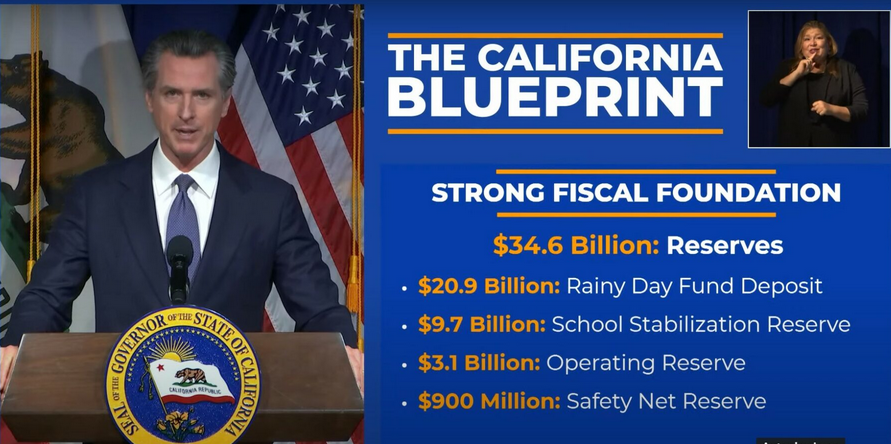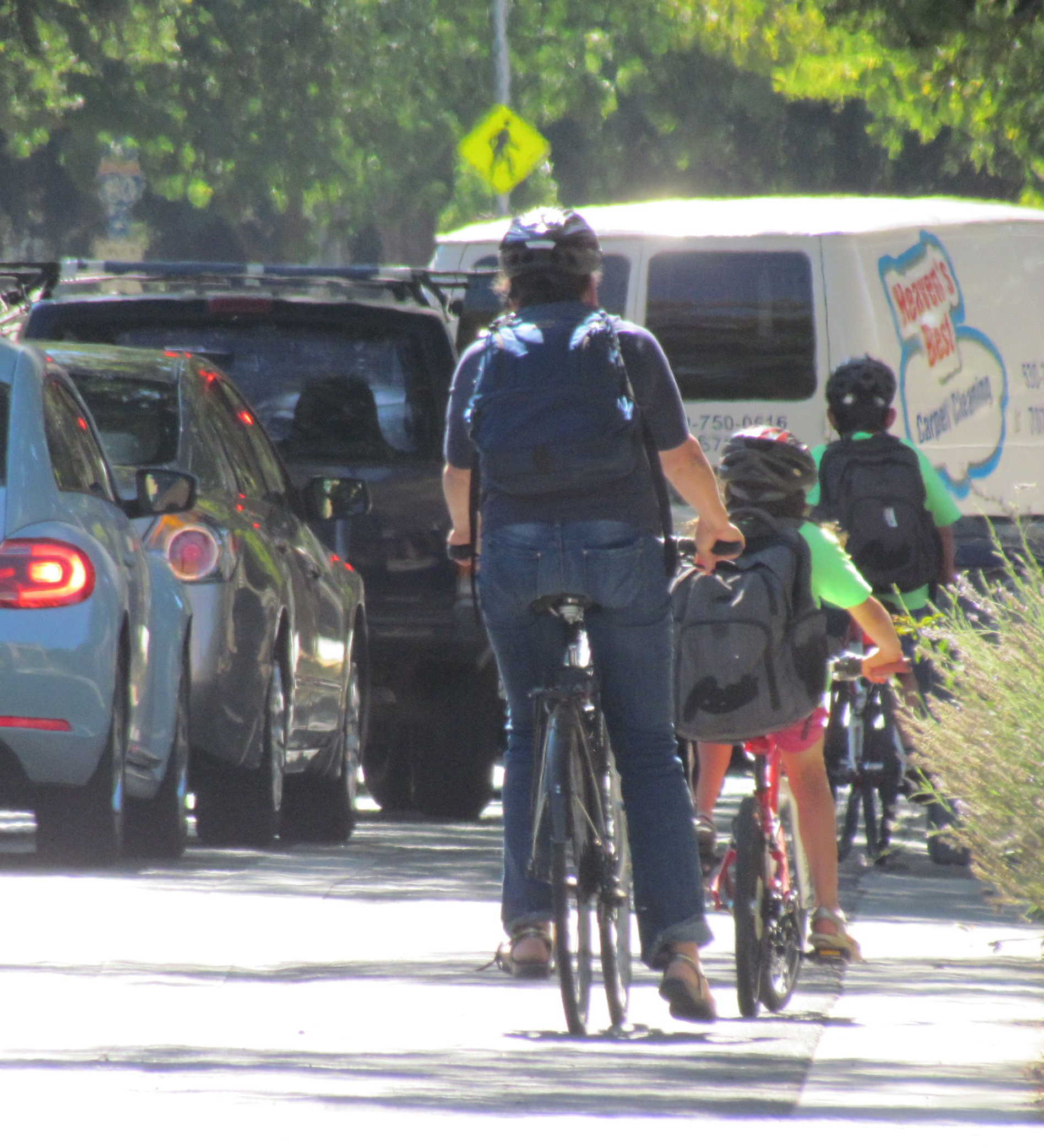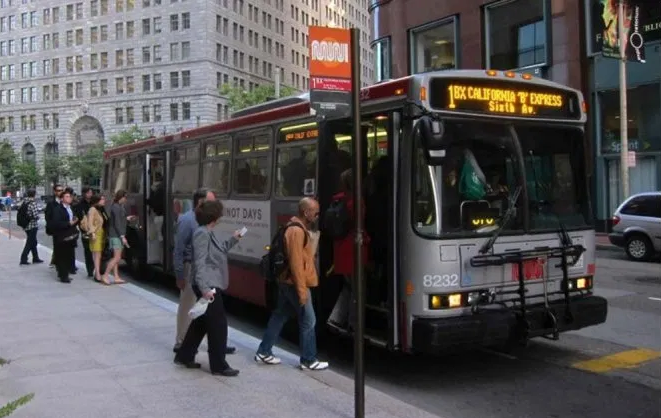California’s Gann Limit Hamstrings Needed Transit Investments
12:50 PM PDT on June 3, 2022

Since January, TransForm has been working with transit riders and advocacy groups across the state to meet with legislators and the governor’s office to express the urgent need for transit operations funding. Operations dollars support transit service, as well as operator salaries and fare reduction programs — the elements of frequent, reliable, and affordable transit. What’s more, agencies have already sounded the alarm that many are heading towards “fiscal cliffs,” massive budget shortfalls that could lead to service cuts, stranded riders, and laid-off workers. But in our meetings, “the Gann Limit” is often referenced as a roadblock to funding transit operations in this year’s budget.
Governor Gavin Newsom's May budget proposal for the coming year tops $300 billion and includes a surplus of nearly $100 billion. This is the second year the state is facing a substantial surplus, fueled largely by income tax revenue from top earners.
The good news is that we have a progressive tax revenue system, which is the first step towards spreading the wealth equitably. The bad news is we also have a decades-old law that limits government spending for social safety net programs and essential services like transit, housing, and health care. This dated, regressive policy restricts the ways we can support low- and middle-income residents.
This law, dubbed the Gann Limit, constrains state government spending over a certain amount to education, infrastructure, or cash rebates. You may remember the “Golden State Stimulus” last year, when the governor issued checks under the pandemic emergency order to people earning less than $75,000 annually; that was, in part, to avoid surpassing the Gann Limit.
This year, the governor has proposed an inflation package that includes sending up to $800 in rebates to vehicle owners, $750 million in grants to transit agencies to provide free transit for three months, and additional funding for active transportation infrastructure like bike lanes and sidewalks. You can read more about the inflation package, and the perspective from TransForm and its partners, at this PDF.
What is the Gann Limit?
Passed in 1979, the Gann Limit (also known as the State Appropriations Limit, SAL, or Proposition 4) capped per capita tax revenue spending at 1979 levels, and required any excess to be distributed to taxpayers as a rebate. In 1988, voters amended the constitutional regulations to be adjusted for inflation, calculated over a two-year period, and significantly changed how the excess money could be distributed (outlined in the bullets below). It’s not often that the Gann Limit is exceeded; however this is the second year in a row the budget will be operating close to this edge.
We’ve come a long way with essential services like public housing and transportation funding. The state provides much more support to residents today than it did in 1978 when the Gann Limit passed. Now, when the state is flush with cash - highlighting deep, growing income inequality - this archaic law limits our ability to increase funding for programs that support Californians who need it most.
There are limited options for what the state can do with the excess cash, determined by amendments passed in the late 1980s:
- Issue tax refunds
- Allocate excess revenues to schools
- Increase spending on specific items that were deemed excluded from the Gann Limit in the amendments such as
- Distributions to local government general funds with no strings attached
- Funding for infrastructure projects
- Emergency spending (the COVID emergency order, for example)
- Paying off any fees or mandates imposed by the courts or federal government
- Paying off existing debt
These serious limitations need to be addressed. The governor and legislature need to find a way to expand funding for transit, for example. While funding a capital transportation investment like buses or a new rail line would be exempt because it is an "infrastructure project," paying for the transit service to get Californians to work is not. While Governor Newsom's proposed $750 million for free transit is a good strategy, it won't make a big enough difference for either individual riders or for strapped transit agencies.
Transit is critical, because transportation is a household's second highest expense after housing, and it's pivotal to addressing the climate crisis and improving air quality and access to economic opportunity. A robust investment in transit that actually matches the scale of the climate crisis will do much more than provide temporary fare relief.
Why is it called the Gann Limit?
The Gann Limit is named after Paul Gann, a conservative, anti-tax crusader most notably known for being a co-author of Proposition 13 along with Howard Jarvis. The two campaigned for Prop 13 across the state, promising homeowners relief for rising property taxes. They succeeded, of course, limiting the amount by which property taxes can rise annually regardless of home value. This law disproportionately benefits white homeowners and continues to further racial and economic inequality in the state today.
These tax cuts and caps on government spending, in the simplest terms, benefit the rich and harm the poor. Prop 13 reduces the amount of money going into government coffers that should be spent on schools and the social safety net. Prop 4, although less insidious, limits government spending and the government’s ability to fund all programs that support Californians in need. While we certainly support the use of state revenue to fund public education, tax revenue collected from unprecedented capital gains during the pandemic are needed to also address the multitude of crises that we face such as homelessness, climate change, underfunded transit, and zero-emission mobility. What makes it worse is that Prop 4 was passed during an election with one of the lowest voter turnouts in history.
Why are we exceeding the Gann Limit now?
The Gann Limit comes into play when the state’s income exceeds expenditures, as is the case with the current state budget surplus.
We’re approaching record surpluses for a few reasons:
- A significant growth in personal income. The state’s largest revenue source, the personal income tax, has ballooned during the pandemic, predominantly from high-income earners. When the top one percent of earners in the state are doing well, the state’s income soars, because these earners pay about half the state’s income tax.
- Record consumer spending in early 2021, likely due to federal and state stimulus checks, increased sales tax revenue.
It would be remiss not to address how disheartening this is in a state with a worsening income divide, a housing crisis, and a sharply rising cost of living. Alongside the reality of homelessness, hunger, and reduced mobility, our state’s economy continues to soar, driven by the incomes of the top earners. Our progressive tax system is working, collecting astronomical revenues during this time of exceeding income inequality, but the Gann Limit is preventing the state from using those dollars to help its residents.
What’s next for the Gann Limit?
There are rumblings about reforming this antiquated law. Governor Newsom and the Senate have said it’s time to bring Prop 4 back to the voters to pass amendments that would allow the budget to better serve Californians. Opportunities to make any changes that impact this year’s budget have passed, but it’s something that needs to be prioritized to build a better future for California with robust essential services and a social safety net.
And the problem isn’t going away. According to state financial analysts, California is expected to exceed the Gann Limit for years to come, if we don’t reform it first.
Amy Thomson is Policy Analyst at TransForm, where this essay was originally published.
Streetsblog California editor Melanie Curry has been thinking about transportation, and how to improve conditions for bicyclists, ever since commuting to school by bike long before bike lanes were a thing. She was Managing Editor at the East Bay Express, editor of Access Magazine for the University of California Transportation Center, and earned her Masters in City Planning from UC Berkeley.
Read More:
Stay in touch
Sign up for our free newsletter
More from Streetsblog California
Active Transportation Program Calls for Volunteer Evaluators
Apply to be a volunteer ATP application evaluator by May 10.
Study: When Speed Limits Rise on Interstates, So Do Crash Hot Spots on Nearby Roads
Rising interstate speeds don't just make roads deadlier for people who drive on them — and local decision makers need to be prepared.
Eyes on the Street: New Lincoln Park Avenue Bike Lanes
The recently installed 1.25-mile long bikeway spans Lincoln Park Avenue, Flora Avenue, and Sierra Street - it's arguably the first new bike facility of the Measure HLA era
Independent Safety Advocates Beef up the Wiggle
Signs and soft-hit posts installed by advocates make the Wiggle bike route calmer and safer for cyclists and pedestrians
Thursday’s Headlines
LA Metro declares emergency over attacks on bus operators; Some deadly Bay Area streets to see safety fixes; Tax ride-hail to save transit? More




